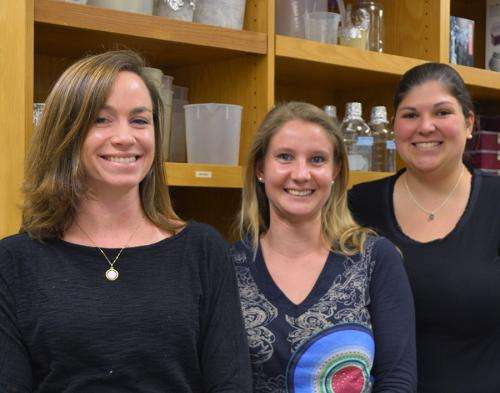Scientists show proteins critical in day-night cycles also protect cells from mutations

A good night's sleep does more than prevent yawning. New research from The Scripps Research Institute (TSRI) shows that two proteins critical for maintaining healthy day-night cycles also protect against mutations that could lead to cancer.
The new study, published March 10, 2015, in the journal eLife, shows that the two proteins have an unexpected role in DNA repair, possibly protecting cells from cancer-causing mutations triggered by UV radiation.
"These proteins play an important role in the response to DNA damage," said TSRI biologist Katja Lamia, senior author of the study. "Researchers might eventually harness that knowledge for pharmaceutical targeting."
Day and Night
The human body senses light and adjusts its rhythms to a day-night cycle called the circadian clock. Feeling tired? Feeling hungry? These feelings are strongly influenced by the body's circadian clock.
Studies show that people with unusual sleep schedules, such as flight attendants or night-shift nurses, are at risk for certain health problems.
"When you have a deregulation of your circadian clock, you're more prone to develop some kind of pathology, like diabetes, cancer or heart disease," said TSRI Research Associate Anne-Laure Huber, who was co-first author of the study with Stephanie Papp, a graduate student at TSRI.
In the new study, the research team investigated a possible cause of these health disparities. They focused on the role of proteins called cryptochromes, which are believed to have evolved from light-activated DNA repair enzymes in bacteria.
Cryptochromes contain a photo-responsive pigment called flavin. While cryptochromes are no longer light-activated, they do hold to a daytime-regulated schedule, and stability of the proteins cryptochrome 1 (Cry1) and cryptochrome 2 (Cry2) is critical for circadian clock function. In the human body, cryptochromes no longer have a direct role in DNA repair either, but they are essential for regulating blood sugar levels and protein production on a day-night cycle.
Repairing DNA
The new study started when the researchers went on what Lamia calls a "fishing expedition." They used a technique called proteomic screening, in collaboration with the laboratory of TSRI Professor John Yates, to test for a wide range of proteins that could bind to Cry1 or Cry2 from mouse and human cells.
The team found that Cry1 could bind with Hausp, a protein with a known role in regulating an anti-cancer protein called p53. The screening also showed that Hausp binds to Cry2, but not as strongly, suggesting that the nearly identical proteins actually have different roles related to DNA repair.
"Most of the time people study them as redundant proteins, but we show that they have distinct functions in this DNA-repair pathway," said Lamia.
Subsequent studies of genetic expression showed that Hausp stabilizes Cry1 by removing protein chains that trigger Cry1 degradation. By stabilizing Cry1, Hausp prevents potential errors in DNA transcription that could occur when DNA is exposed to radiation.
"This is very cool," said Papp. "These proteins can sense that something is wrong in the cells."
The researchers also found that when they blocked Cry2 production in cells, the cells no longer activated p21, a protein that stops mutant cells from dividing. "This could suggest that cells without Cry2 would be more susceptible to cancer," said Lamia.
Together, these findings show that while Cry1 and Cry2 no longer directly repair DNA, they still have an indirect role in the repair process.
This new link between circadian clock proteins and DNA repair is a clue to how disrupting day-night cycles could harm health. Lamia said future studies in her lab will explore additional roles of cryptochromes in the body.
More information: DNA damage shifts circadian clock time via Hausp-dependent Cry1 stabilization, eLife, 2015.
Journal information: eLife
Provided by The Scripps Research Institute



















